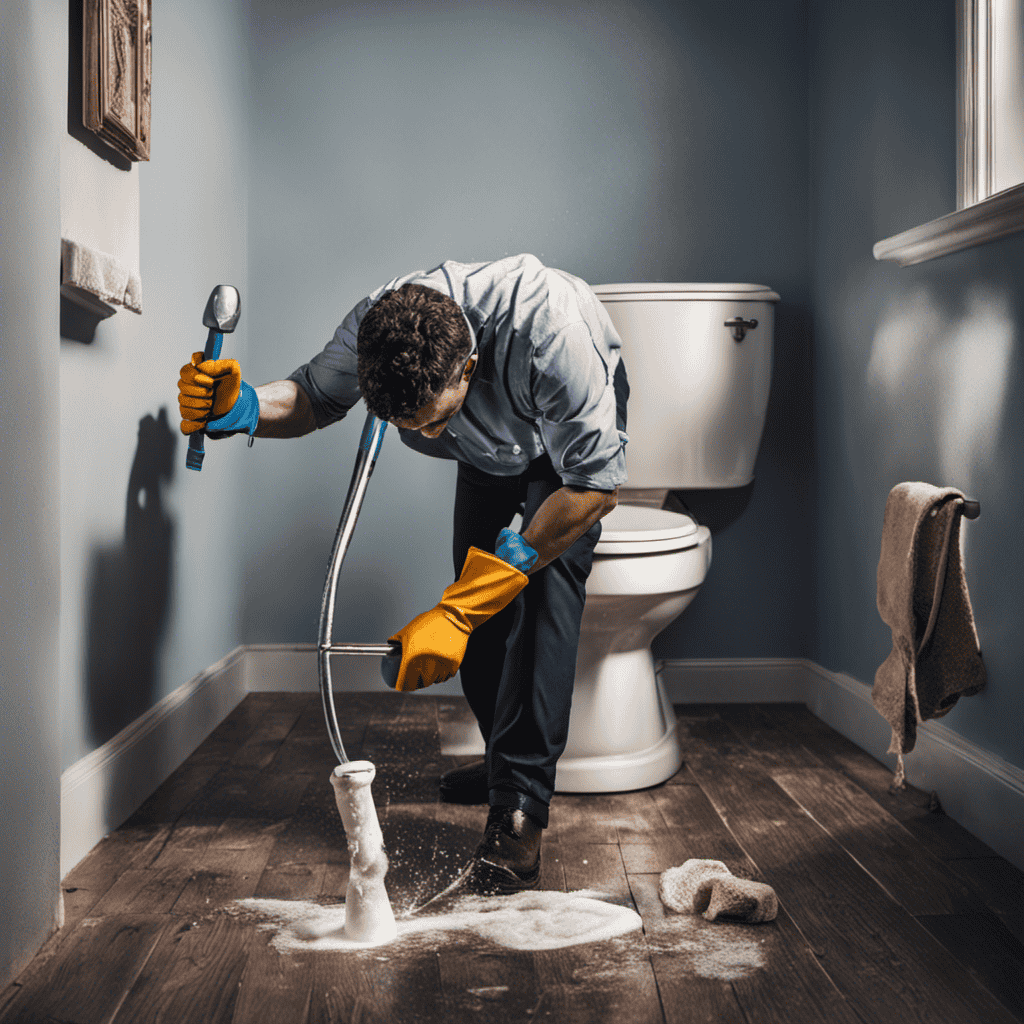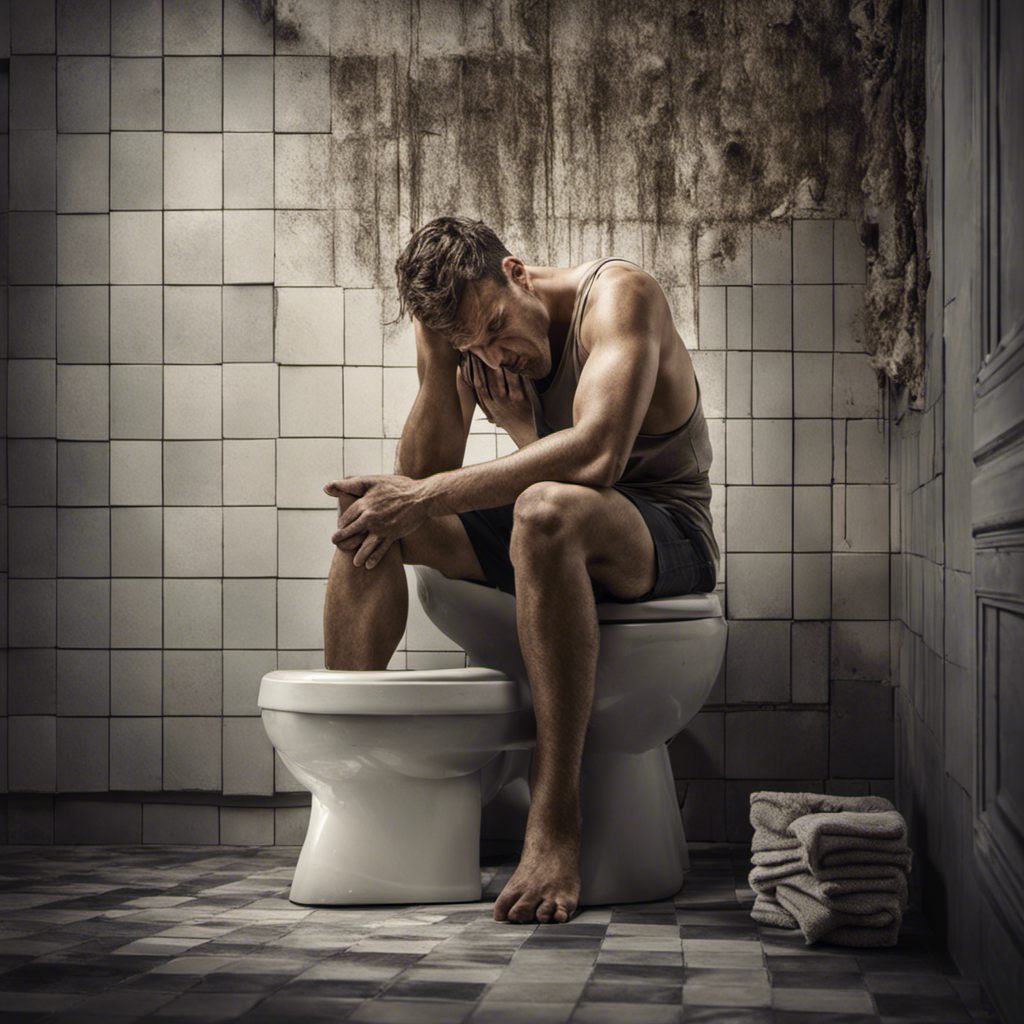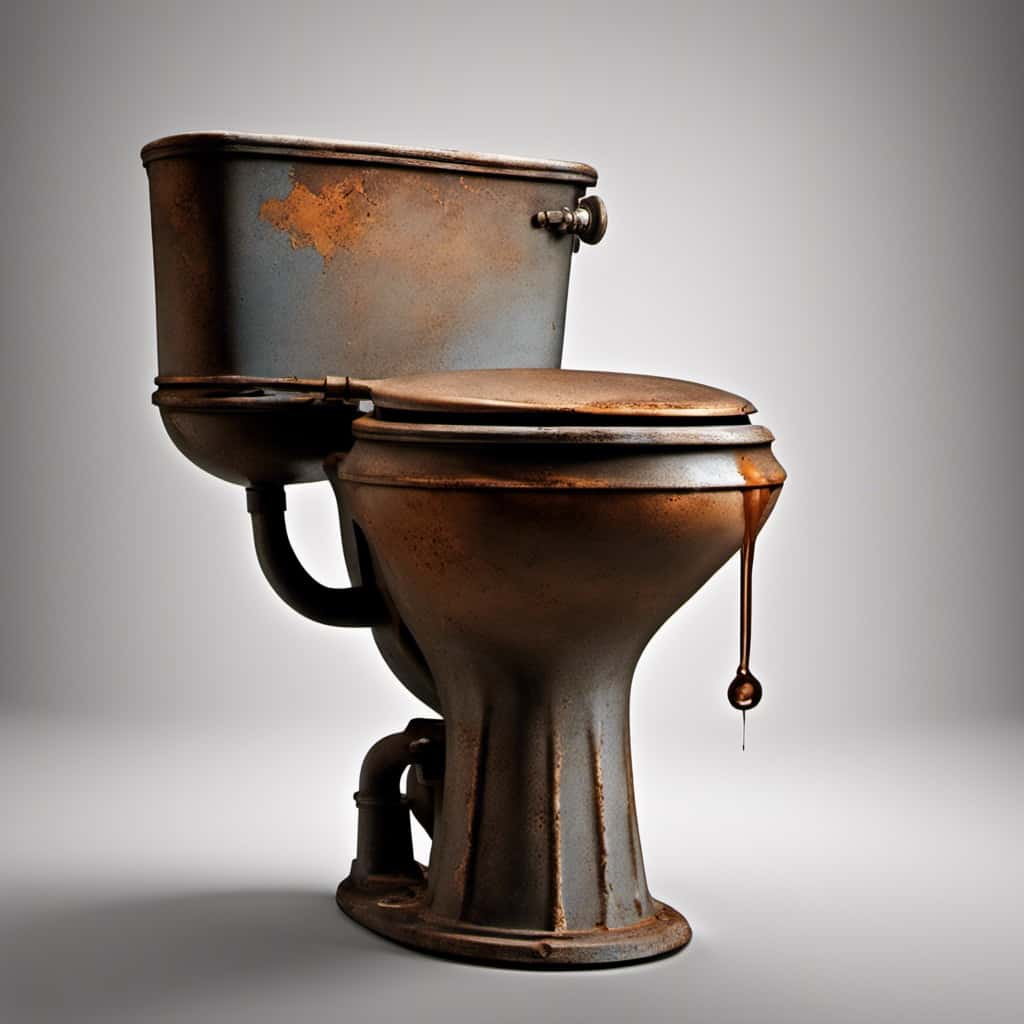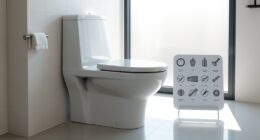Hey there! If you’re like me, there’s nothing more frustrating than a slow draining toilet. But fear not, because I’ve got the solution for you.
In this article, I’m going to show you step by step how to fix that sluggish drain and get your toilet back to its normal, efficient self. From identifying the cause to using the right tools, you’ll be equipped with all the knowledge you need to tackle this pesky problem head-on.
So let’s dive in and get your toilet flowing smoothly again!
Key Takeaways
- Check for clogs in the pipes, including the toilet trap and main sewer line.
- Use a plunger or toilet auger to remove the obstruction.
- If the clog persists, call a professional plumber.
- Regularly clean the toilet bowl and flush to prevent debris buildup and future slow draining issues.
Identifying the Cause of a Slow Draining Toilet
To identify the cause of your slow draining toilet, you’ll first need to check for any clogs in the pipes. Common causes of a slow draining toilet include a blockage in the toilet trap or a clog in the main sewer line.
Signs and symptoms of a clogged toilet include water backing up or not draining at all, gurgling sounds coming from the toilet, and a foul odor.
To check for a clog, you can use a plunger or a toilet auger to try to remove the obstruction. If the clog persists, it may be necessary to call a professional plumber to address the issue.
Checking and Clearing the Toilet Trap
First, you’ll want to make sure that the toilet trap is clear and free of any blockages. Maintaining the toilet trap is essential for proper functioning of your toilet.
The toilet trap is a curved section of the toilet’s plumbing that prevents sewer gases from entering your bathroom. It is also a common area for clogs to occur.
To maintain the toilet trap, regularly check for any debris or buildup that may be obstructing the flow of water. Use a flashlight to visually inspect the trap and remove any visible blockages using gloves or a small tool. Common toilet trap problems include hair, soap scum, and foreign objects.
By keeping the trap clear, you can prevent slow draining issues and ensure the smooth operation of your toilet.
Now, let’s move on to the next step of unclogging the toilet drain using a plunger.
Unclogging the Toilet Drain Using a Plunger
Now let’s see how we can use a plunger to clear the clog in the toilet drain. It’s important to know the right techniques for toilet drain cleaning. Here are four steps to help you get the job done efficiently:
-
Start by positioning the plunger over the drain, making sure it covers the entire opening. This creates a tight seal and maximizes suction power.
-
With a firm grip on the handle, push down forcefully and then pull up quickly. This creates a suction effect that can dislodge the clog.
-
Repeat the plunging motion several times, alternating between forceful pushes and quick pulls. This helps to break up the clog and move it further down the drain.
-
Finally, flush the toilet to see if the clog has been cleared. If not, you may need to repeat the plunging process or try other methods of unclogging.
Using a Toilet Auger to Remove Stubborn Blockages
If you’re dealing with a stubborn blockage in your toilet drain, using a toilet auger can be an effective method to remove it.
A toilet auger, also known as a closet auger, is a tool specifically designed to clear clogs in toilets. It consists of a long flexible cable with a coiled end and a handle at the other end.
To use a toilet auger, insert the coiled end into the toilet bowl and rotate the handle clockwise to push the cable through the drain. Once the blockage is reached, continue rotating the handle to break up the clog.
If a toilet auger is not available, there are alternative methods you can try, such as using a plunger or a drain snake.
Troubleshooting common toilet issues and knowing how to use different tools can save you time and money on plumbing repairs.
Preventing Future Slow Draining Issues With Regular Maintenance
Regular maintenance of your toilet can help prevent future issues with slow drainage. Here are some toilet maintenance tips to keep your toilet running smoothly:
-
Regularly clean the toilet bowl and flush the toilet to prevent build-up of debris and mineral deposits that can clog the pipes.
-
Avoid flushing non-flushable items such as wipes, cotton balls, and feminine hygiene products, as they can easily cause blockages.
-
Check the water level in the tank and adjust the float if necessary to ensure proper flushing and prevent overflow.
-
Keep an eye out for common signs of a clogged toilet, such as slow draining, gurgling sounds, or water backing up into the bowl. Address these issues promptly to prevent further damage.
Frequently Asked Questions
How Often Should I Check and Clear the Toilet Trap to Prevent Slow Draining Issues?
I usually check and clear the toilet trap every few months to prevent slow draining issues. Neglecting this maintenance task can lead to clogs caused by common factors like hair, toilet paper buildup, or foreign objects.
Can I Use a Plunger to Unclog a Toilet Drain if It Is Completely Blocked?
Sure, a plunger can be used to unclog a completely blocked toilet drain. However, if that doesn’t work, using chemicals or trying alternative methods like a plumbing snake may be necessary.
What Are Some Signs That Indicate I May Need to Use a Toilet Auger to Remove Stubborn Blockages?
Signs of toilet blockages can include slow draining, gurgling noises, and water backing up. Regular toilet trap maintenance is important to prevent stubborn blockages. Using a toilet auger can effectively remove these blockages.
Is There a Specific Type of Toilet Auger That Works Best for Removing Stubborn Blockages?
There are different types of toilet augers that work best for removing stubborn blockages. To effectively use a toilet auger, make sure to follow the instructions provided and take necessary precautions.
Are There Any Specific Maintenance Tasks I Should Perform Regularly to Prevent Future Slow Draining Issues?
Toilet maintenance is essential for preventing future slow draining issues. Regular tasks like cleaning the jets, checking the flapper, and inspecting the pipes can help keep your toilet functioning properly.
Conclusion
In conclusion, fixing a slow draining toilet is a relatively simple task that can be done by anyone with a little knowledge and the right tools. By identifying the cause of the problem and taking the necessary steps to clear the blockage, you can have your toilet running smoothly again in no time.
One interesting statistic to note is that, according to a study, 85% of toilet blockages are caused by a buildup of toilet paper and other debris. This highlights the importance of regular maintenance to prevent future slow draining issues.










